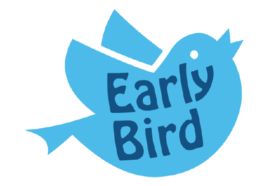This talk from Dr. Mark Lovell, dual-trained Consultant Child and Adolescent Learning Disability Psychiatrist, and ACAMH Director CPD and Training, that forms part of our free Intellectual Disabilities topic guide.
ACAMH Members can receive a CPD certificate, simply email and let us know the date and time that you watched the recording.

Dr. Mark Lovell
Mark Lovell is a dual-trained Consultant Child and Adolescent Learning Disability Psychiatrist working for 1 of the UK’s largest LD CAMHS teams. He works for Tees, Esk and Wear Valleys NHS Foundation Trust (TEWV) and covers the South Tees area along with a multidisciplinary team. Mark has previously held positions within the British Medical Association and the Royal College of Psychiatrists. He has had involvement within projects for the Royal College of Psychiatrist and the Royal College of Paediatrics and Child Health. He is a member of the Child and Adolescent Intellectual Disability Psychiatry Network (CAIDPN) and has particular interests in Autism and Challenging Behaviour within the context of Intellectual Disabilities.
Transcript
Hi, my name is Mark Lovell. I’m a Consultant Child & Adolescent Learning Disability Psychiatrist working for Tees Esk & Wear Valley’s NHS Foundation Trust. I’m also the lead for CPD and training for the Association for Child and Adolescent Mental Health. This talk is based upon a framework that I designed called the Identification of Intellectual Disabilities Framework A2H. This is for children, young people and adults. So what is an intellectual disability? An intellectual disability is an IQ of 70 or below within DSM5, which is the American Psychiatric Association criteria.
However, within the World Health Organisation criteria, ICD10, an intellectual disability is actually 69 or below. So there is a difference in an IQ point, depending on which system you use. You also have to have significant difficulties with your adaptive behaviours. Adaptive behaviours are your activities of daily living. So your daily living skills to do with feeding, getting yourself dressed, managing time, coordinating yourself with friends, and family, and a whole variety of daily living tasks.
There are four major levels. These are mild, moderate, severe and profound. And these all relate to lowering numbers of IQ points. An intellectual disabilities is also known as a learning disability within the UK. This, however, overlaps with the term ‘learning difficulty’, which is an educational term. Generally speaking, a moderate to severe or below learning difficulty in educational terms will relate to a learning disability. There are overlaps with the term global developmental delay, which is a paediatric term. And caution should be, sort of held, particularly when reading research, or books, or information, from the US, where, historically, learning disability also included specific learning difficulties within UK terminology such as dyslexia.
That can make it very difficult to sometimes work out what a piece of literature or a book is actually about. So the IDID A2H framework. I created this as a response to a lack of information out there, really, about exactly what an intellectual disability is, but, also, how to use different bits of information that you may gather, along the way, to make a decision about the likelihood of the learning disability or intellectual disability. This framework is not diagnostic in its own right.
It is a framework for gathering information, for sharing information, and to conceptualise, and think about, and formulate, and generate, a needs based plan for an individual. It is used primarily to assist in decision making. There are long and short versions of this framework which are available through www.ACAMH.org within the intellectual disability topic guide. There is extra information and resources for gathering information as a professional, and also an information leaflet for parents and carers with regards to what information they might want to bring to an assessment of a young person, or adults, intellectual disability.
So it’s an A2H framework, so it goes alphabetically. These are not necessarily logically in order, but they had to fit the alphabet. So A stands for academic. This is all about academia and education. So what are that individual’s or were that individual’s expected attainment levels for their age? You need to bear in mind that there is a range on attainment levels from the most able child in a class to the least able child at a certain age. You would also need to think about what are their current or past academic attainment levels? So this is results for exams, their reports and levels from schooling, college, and other educational establishments.
And do we know if they have a specific learning difficulty, such as, dyslexia or dyscalculia, which would give us some more clues about where their difficulties may lie. Information from an educational establishment from the past, or current, is really important when assessing for an intellectual disability, particularly when we’re looking at how far behind somebody may be academically and does that fit with their IQ and their adaptive behaviours? Are we seeing any spurious results within that system? And it’s really important to know how well a child engaged with education and did they actually attend when they were a child?
It’s important to know what education establishments they went to. Did they go to a specialist provision, were they receiving extra help? Were there any sort of reasonable adjustments made to their education? And did they have a statement of educational need in the past or an education health care plan using the English terminology with regards to extra plans that get your educational needs met? And what was it for? Was it for behaviour, was it for learning? Was it for a disability of a different kind, perhaps, that they needed provisions for visual impairment, hearing impairment, or that they had additional physical health needs?
- B is behaviours of everyday living. These are your adaptive behaviours. There are a range of specific standardised tests available, and this list isn’t exclusive. But these may include the ABAS, the ABS or the violent. These standardise your ability with regards to your daily living skills. And, generally, you would get information from a parent, or carer, and, also, an educational report. And from those scorings, if you’re in the lowest two percentiles, so, in the bottom one out of 50 people and two out of 100, on average, you would be presenting within intellectual disability range.
It’s really important to get these results, or information about this, because this adds to a diagnosis. C is for cognitive assessments. These are standardised assessments or tests usually carried out by psychologists who are trained in the delivery and the interpretation of these. There’s a whole variety of these based upon age, particularly, or by country, and, also by length. So some of the examples might be the Wechsler nonverbal, the WPPSI which is for pre-school aged children, the WISC for children, the WAIS for adults. But also in the UK or in England particularly we have the BAS, which is used by educational psychologists, which is the British Ability Scales.
And there may be short forms and brief assessments like the KBIT-2. There are others available on the market and this list is not exclusive. There may be some other results from Neuropsychology, such as the Rammell, or other tests, which might give you information specifically about, say, memory, or processing and a whole variety of other skills and function that may be to do with neurological functioning.
It’s important to know if there are specific deficits there. It’s really important to know, has a diagnosis already been made? If that is the case, then you may conclude the same from this assessment, or from this framework, or you might decide that something has changed. Somebody may have deteriorated in skills, or they might actually have improved in skills or the original results weren’t interpretable or the ones that you’re gaining now might not be interpretable, you’re using all the information available to you.
D is for development. There are a whole variety of aspects of our lives that we develop within as children and into adulthood. It would be useful to know if there are any standardised tests that have already been done, such as the schedule of growing scales, the Denver II, which may be carried out by paediatrics, or within child development centres. The Couth and Couth 2, which may be carried out by speech and language therapy. British picture vocabulary scales, or Bailey’s, which is also another assessment of development.
There are a whole variety of these assessments on the market. And they can give you a clue as to how delayed and in what domains somebody might have delays. Information may also be gathered about development from paediatrics, physiotherapy, occupational therapy, speech and language therapy, health visiting, GP, portage workers, etc. There’s a whole variety of professionals that may be involved with developmental assessments and treatments. So important to know if there are any existing diagnoses already in place or if there were global developmental delays. Unfortunately global developmental delays do not have a level of delay attached to them.
And it is a term that should really be used before the age of five and then converted to something else after five. We develop in a whole variety of areas. So, speech, language and communication, gross motor, fine motor, our social skills, our play skills. Our behaviours develop over time and also our senses develop. So, it’s really important to think globally about some of these developments, about impairments, and needs, and also about strengths. E is for environment. This is information from the home setting, such as parenting style, stability of placement, also from the school setting.
Was the child, or young person, in a specialist provision? Did they go to school? Did they have a peer group? What was their peer group like? For instance, if you went to a mainstream school and you were the only child with a disability, your peer group may not resemble that child and that may have caused difficulties with peer relationships. Was the child looked after or adopted? That may give some clues about early life experiences, but, also, about the stability of placements around a child.
You may use information from social care, such as, safeguarding or vent proceedings. A whole variety of information may be available to you, particularly around past experiences and in particular about adverse childhood events, traumatic experiences such as abuse, stability of placements, etc. etc. F is factors, so, other factors that may be at play. So consideration of somebody’s mental health. If you have an intellectual disability, you have an increased chance of mental health problems. But if you were mentally unwell at the time of your assessment, it may impact upon your current functioning and it may give you a diagnosis that you may develop back out of if your mental health is treated.
So you need to bear that in mind. Behavioural conditions such as autism spectrum disorder, ADHD, and behavioural difficulties such as challenging behaviours, or behaviours that challenge others, are also very important to consider because they may impact upon schooling, engagement with tests, but also may interfere with the test results, such as, if you have difficulty concentrating, or if you have difficulty with understanding questions about social situations. Those will interfere with your results and your functioning in everyday life. Physical health is also very important, particularly if the physical health involves your neurology in your central nervous system and your brain.
So conditions such as epilepsy, or a head injury, foetal alcohol spectrum disorder, hearing impairments, visual impairments, will all impact upon your ability to do tests and function within your everyday life. They’re also very important to bear in mind, if somebody can’t see, for instance, they’re not going to be able to do parts of tests that are visual. Or if they can’t hear you, they’re not going to either engage with education, or learn, and understand, over time. But, also, unless there are provisions put in place to compensate for the hearing difficulty.
But it’s very hard to do a cognitive test if you can’t hear the instructions. So those aspects are very important to consider. And, for instance, if you’re having a seizure, or you’ve just had a seizure before your cognitive assessment, you need to wait and do it later when you’re not postic or after the seizure. Genetic conditions are very important. There are many suggested conditions that are directly linked with intellectual disabilities and other neurodevelopmental conditions. And these need to be considered either to give you a clue that it is very likely that there is an intellectual disability or that it may raise your, sort of, interest or clinical, sort of, thinking about that you need to assess for one.
Attachment is what happens between a child and their primary caregiver. If you have an attachment disorder or difficulties that may seriously impact upon your learning, your engagement, particularly socially and with communication and language. And this may continue to interfere with peer relationships, your daily living skills, and your engagement with education. So, it’s important to know about attachments and past or present abuse. This we know that abuse occurs more commonly in those with intellectual disabilities than in the general population.
We also know that it may have happened in the past or currently be occurring. And we have to bear in mind, is now the right time to do an assessment? If someone is very traumatised, at this moment in time, it may not be a good time to do an assessment or that you may need to engage that young person for a period of time to be able to get the best out of them during any testing so that they can trust you as an examiner, as a psychologist, for instance, doing a test, to get to know that child before doing the test.
It may also be traumatising being tested. Because if the young person understands that there may be some outcomes of this and that they may be presenting themselves as potentially failing something, some of the styles of behaviour and engagement of people may be impacted upon by, sort of, abuse and attachment disorders. G is about general impression. So with the collected information you need to consider, is it likely the child, or adult, has normal intelligence learning difficulties or an intellectual disability or that you still don’t know?
Can anything else explain that child or adult’s presentation at this moment in time? Do they have any comorbidities, or co-occurring conditions that either raise your chances of having an intellectual disability or that need to be considered in greater detail to think through what’s going on? Particularly, for instance, say if you are identified, at this moment in time, that somebody was scoring on their assessments, so, having an intellectual disability, but they also have ADHD that was untreated. ADHD impacts upon your hyperactivity levels, or your activity levels, it impacts upon impulsivity as well as attentional levels.
If you can’t sit still, you’re impulsive, and you struggle to remember things, or stay on task, it’s very hard to do an assessment. So, sometimes, you may need to go away, treat the ADHD, and then return, when stable, to looking at intellectual disability again, because, often, IQ points may go up. It’s important to consider what is this individual’s strengths and difficulties? What are their strengths and difficulties? Because we are heading towards making a needs based plan and how to meet those needs.
Knowing that someone has an intellectual disability is all very well, but we need to do something about it, such as, reasonably adjusting to their needs, but, also, ensuring that their wider needs are also met. So H is the final section which is how to meet their needs. And this is about generating a needs based plan upon all the information that you’ve gathered over the A to G components of the framework. And this will consider mental health, behaviours, other diagnoses, physical health, education, social care, and health, in general.
So it’s really, really, important to think through meeting somebody’s needs as the primary outcome of this framework, rather than just the diagnosis. Irrespective of whether a diagnosis is made, this person has been presented for an assessment. It is likely that they do have some additional needs that need to be met. So within the ACAMH website, there is a written version of most of what I’ve said. There’s a short version, and a long version, and some information for parents and carers.
These versions can all be freely used, and distributed, and printed out. And should anyone want to use them clinically, there is a clinical framework. And this resource, itself, is either here to be shown to others freely or the slides can be used and adapted, if necessary, to the local service. And you can use the set of slides. It’s all freely available but are copyrighted so cannot be used commercially. However, if you wish to use these, in any great detail, I would like to know about your experiences. And you can contact me through mark.lovell@nhs.net. So thank you for listening to this presentation, and good luck with using the framework.



Discussion
Thank you very much Mark,for very interesting webinar,and useful information.